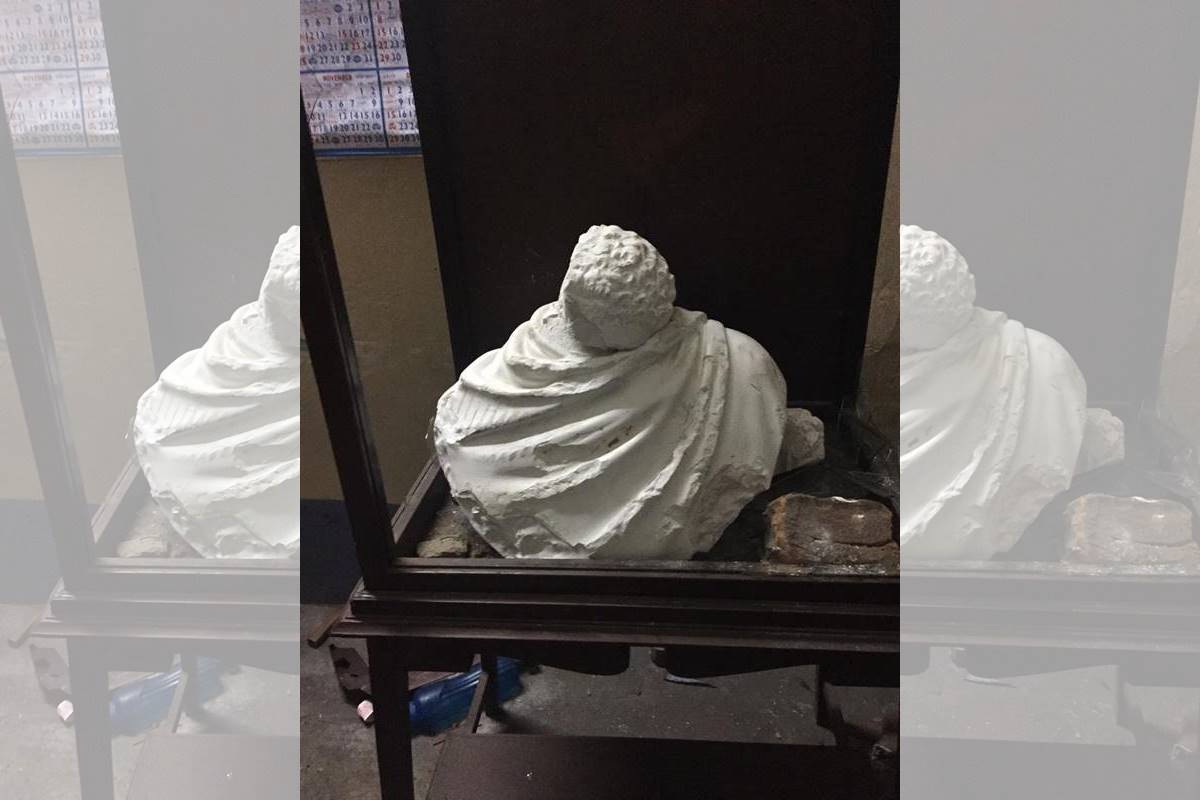KMC focus on slum area development for next fiscal
With emphasis on women-centric projects, the city’s slum areas are slated for an infrastructural development in the next fiscal.
Suffice it to register that the party president, Amit Shah, who was on a visit to the city during the wrap-up motions of the election, ought to have reined in his thoroughly unruly cadres as the grandstanding of the roadshow wound its way through the city.

The vandalised statue of Ishwar Chandra Vidyasagar at Vidyasagar College. (Photo: Twitter/@derekobrienmp)
The Bengal Renaissance and its stalwarts have never been so severely trashed ~ and literally so ~ over the past 200 years.
And the culpability for Tuesday’s desecration of Iswar Chandra Vidyasagar’s bust at Kolkata’s Vidyasagar College would appear to rest on the wayward stormtroopers of the Bharatiya Janata Party. They are alleged to have smashed the statue, verily a symbol of a leader of the reform movement.
Advertisement
More accurately, Bengal today showcases the twin travesty of democracy as also a stirring chapter of its history. Whether or not the Jan Sangh or its present incarnation endorses the social reforms of 19th century Bengal need not detain us here.
Advertisement
Indubitable must be the fact that it is a momentous chapter in the history of India. Suffice it to register that the party president, Amit Shah, who was on a visit to the city during the wrap-up motions of the election, ought to have reined in his thoroughly unruly cadres as the grandstanding of the roadshow wound its way through the city. The social sciences, pre-eminently history, are open to subjective reflection; admittedly, there is a tendency towards academic detoxification, but never through the sheer vandalism of party-sponsored goons, as was witnessed on Tuesday at two centres of learning.
It is no defence to say there might have been provocation; considering the acrimony that has marked the Bengal campaign, the BJP president ought to have known he would be shown black flags. Two centuries after the momentous reform movement that changed the face of an antediluvian Bengal, it bears emphasis that while the Renaissance ensured that India would not remain wholly Western, it was equally plain that she would not be wholly eastern, as historian Percival Spear has written.
It is hard not to wonder whether the BJP has an issue with such reforms as the abolition of sati, widow remarriage, and Macaulay’s Minute on English education. In the 21st century, there can be only a certain nuisance value to such reservations, if any. The other probable provocation was the denial of landing rights to Shah’s helicopter on a tract of private land in Baruipur, near Kolkata.
This was intrinsically an administrative matter; the retaliatory strike on Vidyasagar’s statue exemplified far greater indignation than the party was entitled to. Vidyasagar and Raja Rammohun Roy symbolised the Bengal Renaissance movement, not to forget the role of Lord William Bentinck. On Tuesday, the stalwarts were trivialised in the presence of the president of a party that has ruled the nation for the past five years.
It is tempting to cavil that the officiating Police Commissioner, posted by the Central Election Commission, has never done a stint in Kolkata. In point of fact, the rest of the force was mute witness to the mockery of values by vandals unschooled in the country’s heritage. Iswar Chandra Vidyasagar deserved better in a city that was the cradle of the Bengal Renaissance. He has been disgraced.
Advertisement